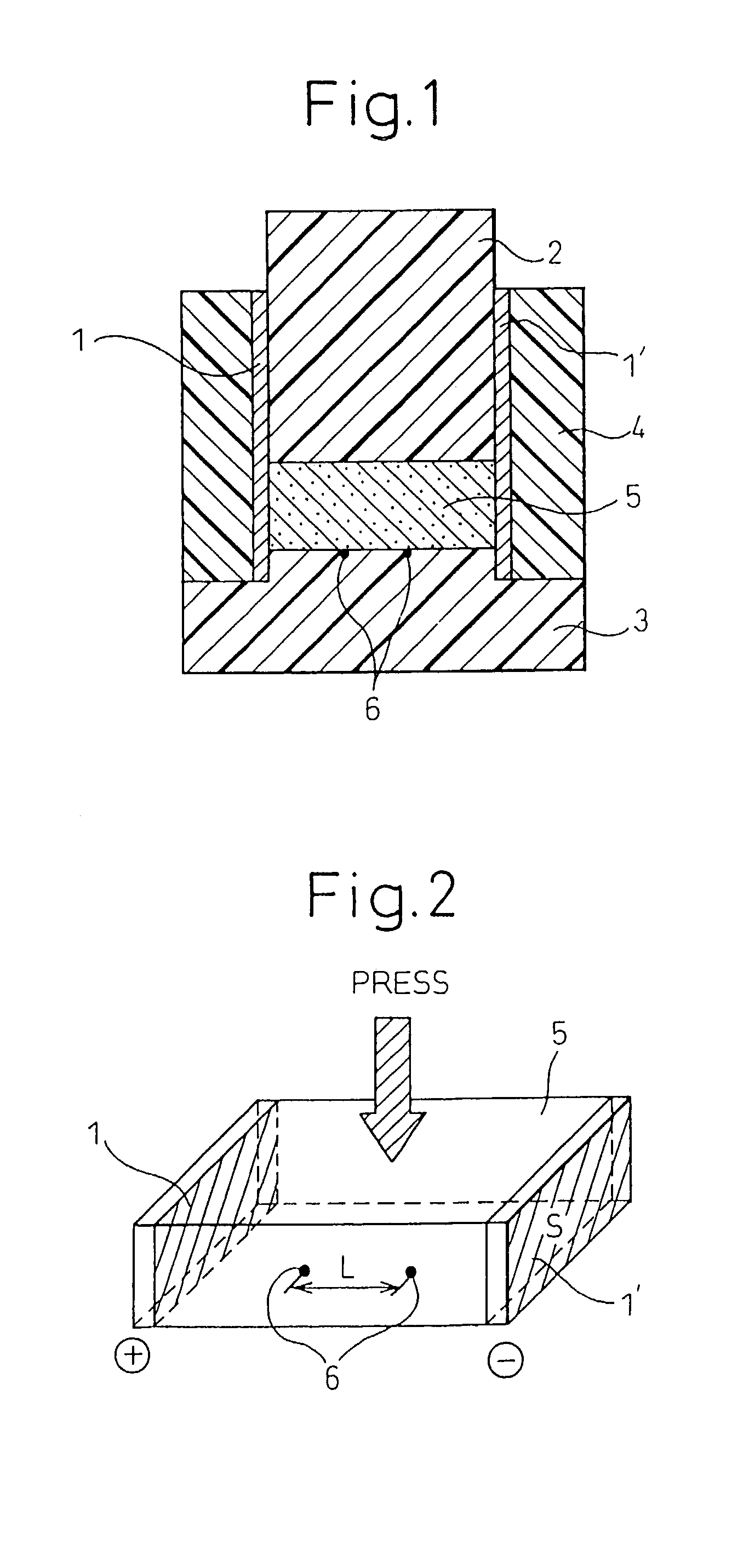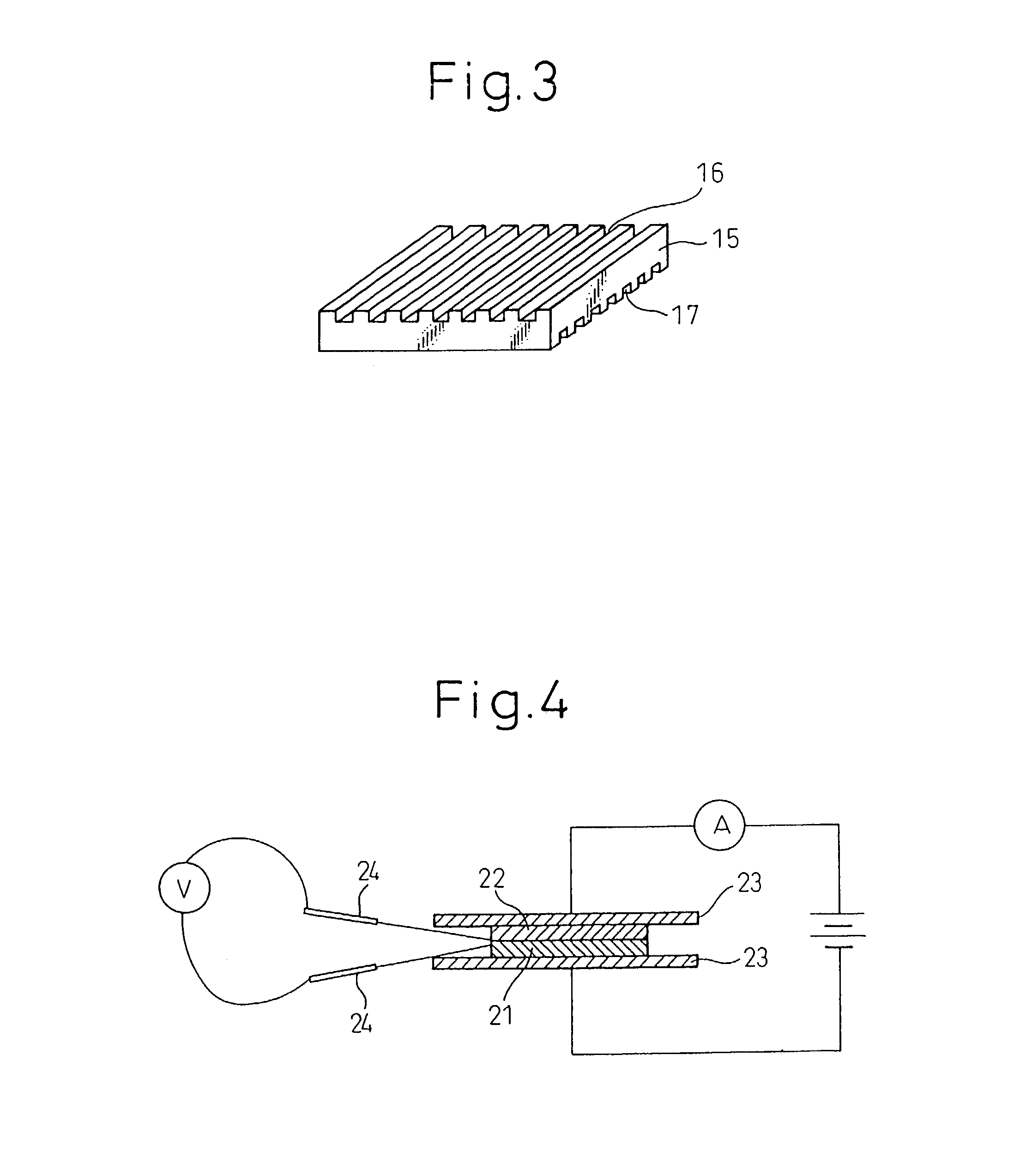Conductive curable resin composition and separator for fuel cell
a technology of curable resin and separator, which is applied in the direction of electrochemical generators, sustainable manufacturing/processing, final product manufacturing, etc., can solve the problems of long time required for firing, inability to achieve adequate durability, and low productivity, etc., to achieve excellent conductivity, high packing content, and superior heat release properties
- Summary
- Abstract
- Description
- Claims
- Application Information
AI Technical Summary
Benefits of technology
Problems solved by technology
Method used
Image
Examples
examples
[0096]The present invention will now be explained in greater detail by way of examples, with the understanding that they are in no way limitative on the invention.
[0097]The materials used were as follows.
Component (A) (Curable Resin Composition)
A1: Elastomer
[0098]NBR1 (acrylonitrile-butadiene rubber; Nipol DN003 by Nihon Zeon, Mooney viscosity (ML1+4 (100° C.): 78)
[0099]NBR2 (acrylonitrile-butadiene rubber; Nipol 1312 by Nihon Zeon, Mooney viscosity (ML1+4 (100° C.): unmeasurable due to liquid form)
[0100]EPDM (ethylene-propylene-diene rubber; EP25 by Nihon Synthetic Rubber, Mooney viscosity (ML1+4 (100° C.): 90)
[0101]SBR (styrene-butadiene rubber; SL574 by Nihon Synthetic Rubber, Mooney viscosity (ML1+4 (100° C.): 64)
A2: Radical Reactive Resin
[0102]ALE (allyl ester resin; AA101 by Showa Denko K.K.)
[0103]VE1 (vinyl ester resin; sample containing 5 wt % phenol novolac-based diallyl phthalate, by Showa Highpolymer Co. Ltd; viscosity: 2.1 (Pa-sec, 80° C.))
[0104]VE2 (vinyl ester resin; H...
example 16
[0136]For Example 16, the composition used in Example 1 was formed into a 1.7 mm-thick uncured sheet using a 10-inch twin roll under conditions with a roll temperature of 60° C., a roll gap width of 1.7 mm and an equal rotation speed of 15 rpm, the uncured sheet was cut to a size of 280×200 mm and the cut sheets were inserted into a die capable of forming a plate with a size of 280×200×1.5 mm and having 1 mm-pitch grooves on both sides, and a 500 ton compression molding machine was used for 3 minutes of curing with a die temperature of 170° C. and a pressure of 60 MPa to obtain a double-side grooved cured body.
example 17
[0137]For Example 17, the composition used in Example 1 was extrusion molded into a 1.8 mm-thick, 70 mm-wide sheet using a 60φ single-screw extruder under conditions with a temperature of 60-90° C. and a rotation speed of 40 rpm, the uncured sheet was cut into sheets having a size of 200×70 mm and the cut sheets were placed in parallel into a die capable of forming a plate with a size of 280×200×1.5 mm and having 1 mm-pitch grooves on both sides, and a 500-ton compression molding machine was used for 3 minutes of curing with a die temperature of 170° C. and a pressure of 60 MPa to obtain a double-side grooved cured body.
PUM
| Property | Measurement | Unit |
|---|---|---|
| diameter | aaaaa | aaaaa |
| diameter | aaaaa | aaaaa |
| diameter | aaaaa | aaaaa |
Abstract
Description
Claims
Application Information
 Login to View More
Login to View More - R&D
- Intellectual Property
- Life Sciences
- Materials
- Tech Scout
- Unparalleled Data Quality
- Higher Quality Content
- 60% Fewer Hallucinations
Browse by: Latest US Patents, China's latest patents, Technical Efficacy Thesaurus, Application Domain, Technology Topic, Popular Technical Reports.
© 2025 PatSnap. All rights reserved.Legal|Privacy policy|Modern Slavery Act Transparency Statement|Sitemap|About US| Contact US: help@patsnap.com


